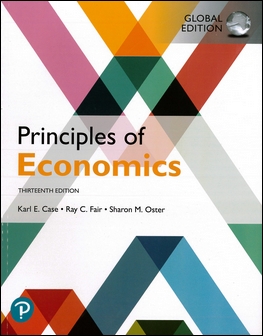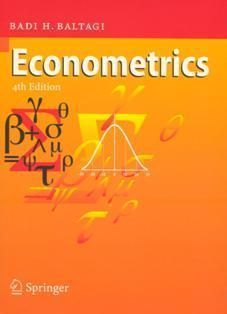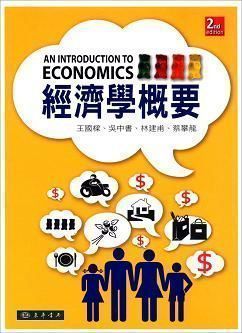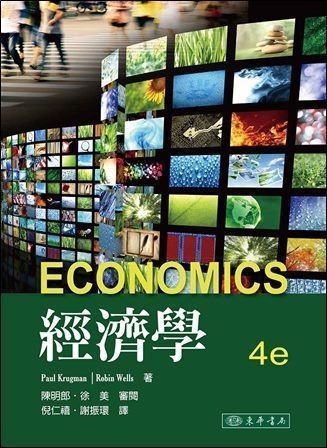書籍分類
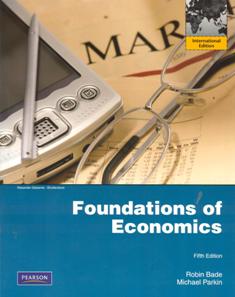
Foundations of Economics 5/e
作者:Robin Bade, Michael Parkin
原價:NT$ 1,190
ISBN:9780132547093
版次:5
年份:2011
出版商:Pearson Education
版次:5
年份:2011
出版商:Pearson Education
內容介紹 本書特色 目錄
- Description
Economics is a subject you learn by doing. Foundations of Economics breaks the mold of a traditional text and becomes a practice-oriented learning system. Each chapter uses a Checklist to focus students’ attention on the most important key concepts. A discrete section introduces each of these core concepts and is immediately followed by a Checkpoint, a full page of practice that applies the concept. The result is a patient, confidence-building approach that prepares students to use economics in their lives, regardless of what their future career will be.
- Features
- Focus on core concepts: Each chapter focuses students’ attention on 3–5 key concepts so students understand how the various details fit back into the larger picture.
-
Learn by doing: Foundations of Economics and its accompanying print and online resources are structured to encourage learning by doing. Within the text, a Checklist-Checkpoint system provides a practice-oriented framework:
- Checklists begin each chapter to preview the 3–5 key ideas students need to know, and the chapter is broken into discrete sections devoted to each of those ideas.
- Checkpoints follow each of those sections and provide a full page of practice. Each Checkpoint includes a practice problem with a guided solution and a parallel exercise for the student to try.
- Chapter Checkpoints end each chapter and include a summary of key points and key terms, as well as additional practice opportunities consisting of problems and exercises, news analysis questions, critical thinking questions, and Web exercises that require students to find data and information online to answer discussion questions.
-
News analysis and data-driven problems at the end of each chapter include:
- News-based end-of-chapter questions that give news summaries and ask students to apply economics to the news.
- Web exercises that ask students to seek out real data on the web and use it to answer questions.
- Modern micro and macro topics are presented at an accessible level that uses contemporary examples to tie theory into the real world.
- Enhance student focused feedback in MyEconLab with personalized Study Plan questions, more guided solutions, and number and quality of news-based application questions.
- Tighter connection between the texts pedagogical system and MyEconLab.
- Checkpoint questions mirror the Study Plan.
- A reorganization of End of Chapter Checkpoints so that Page 1 of 3 is Test A, and Pages 2 and 3 will be instructor assignable. Half of these are news-based application problems.
- New coverage of important issues such as health care, immigration, energy, and the global financial crisis. Integrated coverage of behavioral economies.
- Chapter 2: The U.S. and Global Economies will focus more strongly on the theme of an interdependent world. The U.S. is heavily influenced by Asia and Europe, and the circular flow introduced in this chapter will be extended to include trade. The revisions here are featured in the macroeconomics split too.
- Chapter 4: The Economic Problem includes more Eye-On boxes early on in the chapter.
- Chapter 5: Elasticities of Demand and Supply. We added a table of equations and/or a summary guideline for students.
- Chapter 7: Renamed “Government Actions in Markets”.
- Chapter 25: Renamed, "Finance, Saving and Investments". Updated the Eye On boxes to address the recent changes on Wall Street.
- Chapter 26: "The Monetary System". In this chapter, we will now discuss the explosion of the federal balance sheet and the tools that have been introduced to deal with the crisis.
- Chapter 27: "Money, Interest, and Inflation" features new material that will help to explain why the quantity theory of money is not doing a sufficient job in today’s economic climate.
- Chapter 29: "Aggregate Expenditure" includes new coverage on the stimulus package and fiscal multipliers.
- Chapter 31: "Fiscal Policy," and Chapter 32, "Monetary Policy" includes several new Eye On applications, with content drawn from the current financial crisis. Chapter 31 also includes material on the Fed’s fiscal policy.
- Chapter 33: "International Finance" includes additional coverage of the exchange rate, in terms of today’s changing global economic climate.
New to This Edition
The Foundations of Economics by Bade/Parkin, fifth edition shines with a well-targeted content adjustment making it one of the most relevant and up-to-date Principles of Economics texts on the market today. In-text examples, dynamic chapter openers, and applications contain compelling content and real-world issues. We elevated MyEconLab (MEL) and integrated the story to ensure that it is a more visual feature. This edition capitalizes on the seamless connection between the text and the e-environment to highlight how the authors’ emphasis on continuous practice is integrated throughout the entire Bade/Parkin learning system. The fifth edition MyEconLab course and the accompanying print supplements were written in tandem with the textbook.
Key Themes
Changes to the micro chapters include:
Changes to the macro chapters include:
- Table of Contents
1. Getting Stated
2. The U.S. and Global Economies
3. The Economic Problem
4. Demand and Supply
5. Elasticities of Demand and Supply
6. Efficiency and Fairness of Markets
7. Government Actions in Markets
8. Taxes
9. Global Markets in Action
10. Public Goods and Public Choices
11. Externalities and The Environment
12. Consumer Choice and Demand
13. Production and Cost
14. Perfect Competition
15. Monopoly
16. Monopolistic Competition
17. Oligopoly
18. Markets for Factors of Production
19. Inequality and Poverty
20. GDP: A Measure of Total Production and Income
21. Jobs and Unemployment
22. The CPI and the Cost of Living
23. Potential GDP and the Natural Unemployment Rate
24. Economic Growth
25. Finance, Saving, and Investment
26. The Monetary System
27. Money, Interest, and Inflation
28. Aggregate Supply and Aggregate Demand
29. Aggregate Expenditure Multiplier
30. The Short-Run Policy Tradeoff
31. Fiscal Policy
32. Monetary Policy
33. International Finance



